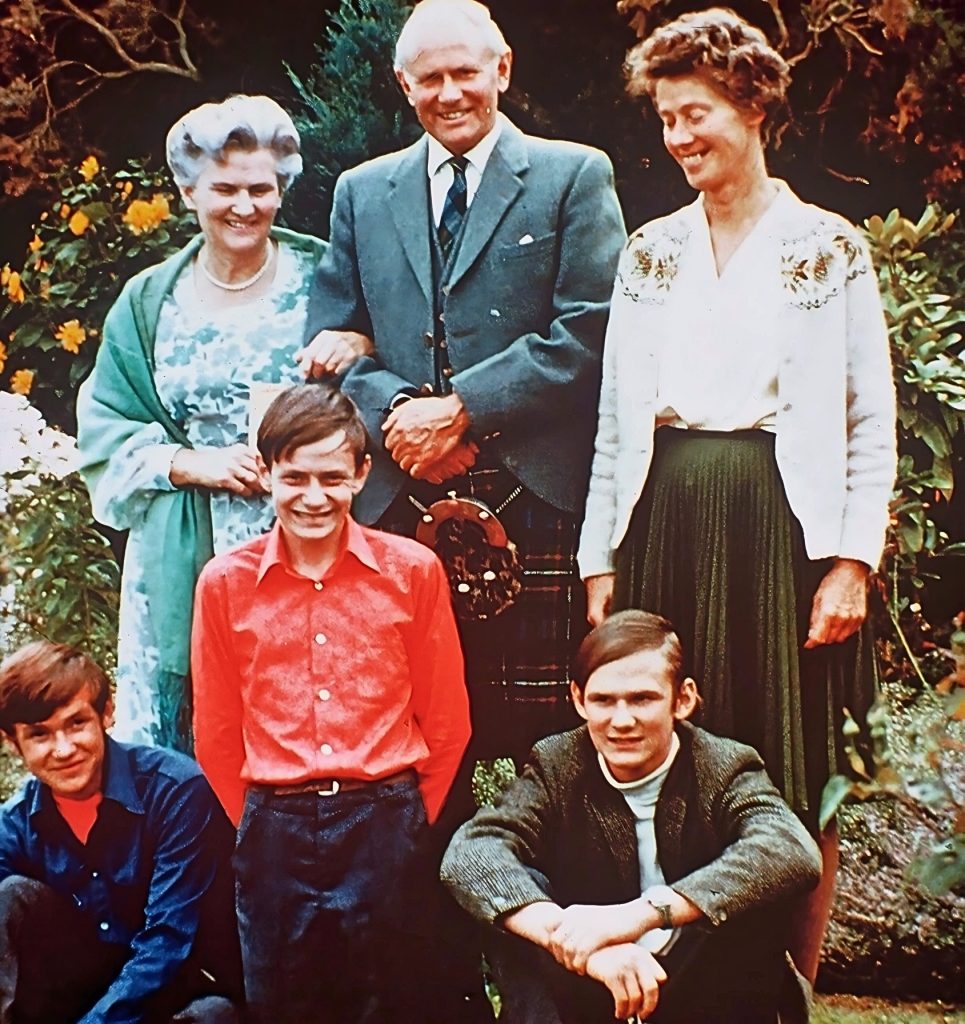Peter and Eileen Caddy, their three young sons and close friend Dorothy Maclean.
Celebrating 50 years
with Geoff Dalglish – 200th Odyssey Edition 2012
“If we could rewind life a half century, we’d be greeted by a very different world to the one we know today.”
“Mine would be the mostly joyful place of a 13-year-old who shyly visited the gorgeous little blonde a few houses up the street, or kicked off his shoes after school and raced to the beach or bush in search of adventure. TV had yet to arrive in apartheid SA and I was largely oblivious that the superpowers were edging us perilously close to a potential nuclear holocaust as the Cold War escalated between the US and the Soviet Union.” Geoff recalls
It was in 1962 that President John F Kennedy imposed a naval blockade on Cuba; Marilyn Monroe was found dead of a suspected overdose; East German border guards shot an attempted escapee and left him to die on the Berlin Wall; the US landed a rocket on the moon and Beatlemania gripped young people everywhere with the launch of the Fab Four’s first single, Love Me Do.
Big movie hits included West Side Story, Lawrence of Arabia and To Kill a Mockingbird while musical influences were as diverse as the surf sounds of The Beach Boys and the protest voice of a young Bob Dylan.
I was too young to be part of the hippie generation although I identified with the ‘Make love, not war’ message and later proudly wore a peace ring.
Meanwhile, in a bleak wintry dunescape in northern Scotland, sacked hotel manager Peter Caddy and his wife Eileen parked their caravan at the Findhorn Bay Caravan Park, while trying to figure out what to do next and hoping to be on their way within days.
With them were their three young sons and close friend Dorothy Maclean.
That was on November 17, 1962 and never for a moment did the trio of adults guess that they were the nucleus of what would become a renowned spiritual community, holistic education centre and celebrated eco-village with the lowest recorded ecological footprint in the developed world.
The beginnings alongside a rubbish dump were inauspicious, to say the least and it wasn’t until the early 1970s that a book entitled The Magic of Findhorn by visionary environmentalist Paul Hawken, along with a BBC documentary, put the fledgling community on the map, attracting seekers from around the planet.
Fast forward 50 years and we find an oasis of green living with solar panels, whirling wind turbines that harness electricity, eco-homes – some fashioned from discarded whisky barrels – and The Living Machine, an ingenious natural and chemical-free process that uses plants and bacteria to convert human sewage into clear water that looks good enough to drink.
As Neale Donald Walsch, author of the best-selling Conversations with God series, observed: “There is a unique energy here — it makes it easy for people to access a different level of knowing, understanding and experiencing of some of the higher truths of life and how it is.”
Here people are encouraged always to question, knowing that it is at the edge of our comfort zone that life begins.
“Come to the edge,” Walsch invites. “What Findhorn brings to the human spirit is the possibility of flying.”
It has been described as a greenhouse for spirituality, a mystery school, a laboratory for change and even a steaming Atlantis rising from the ocean depths — but perhaps most popularly as a beacon of love and light in a troubled world.
I love that lighthouse analogy as lighthouses seem somehow synonymous with my higher purpose, whether I’m striding along the coast from one to another or trying to live a bigger life that beams love and light out into a world that often seems threatened by brooding storm clouds.
In more than 5 000 km of walking with a message recently, my feet have criss-crossed whole countries Pausing to rest and renew in the shadow of lighthouses with inspirational views over vast oceans. But nowhere do I experience the lighthouse analogy more powerfully than at the Findhorn Foundation community, whose legacy has been to serve as a beacon of illumination, touching lives around the world.
Each year it attracts thousands of visitors, many attending Experience Week (see page 23) as an introduction to another way of living and looking at the world. Some return again and again.
What’s the attraction? For me it’s the indefinable energy of the place: people smile and laugh a lot, as well as having the courage to confront all the difficult questions. Who are we? Where are we going? Is there a way out of the mess Spaceship Earth finds itself in as the end of 2012 looms large? Can we build a new social paradigm where money and economic growth are not the primary motivators?
Increasingly, I’ve felt the need to go deep within to find peace and to acquire the tools to connect with the Divine and Findhorn has been a pathway, teaching me how to live more simply and sustainably.
I’m also impressed with the power of the group processes. Almost all start with an ‘attunement’ where participants hold hands in a circle while one person says a few words, encouraging each person to be present in the moment and appreciate exactly where they are and what gifts the day or activity is bringing.
This is a chance to connect with spirit, the group and yourself. It’s a time when you forget about mobile phones, computers and deadlines – and quietly go within.
If your starting point is an open-hearted space where you deliberately connect with others in a circle, I believe you are wiser, more loving and more intuitive in whatever you do. Findhorn has definitely made me more compassionate and empathetic. Instead of thinking: Just get on with it and do your job, I’m likely to try and understand the other person’s unique challenges and perspectives.
Without doubt Findhorn is a force for positive change and new ways of living more lightly upon the Earth, the pioneering community having famously fostered a creative collaboration with the overlighting intelligence of the natural world.
The gentle compassion of an attunement is one of the things I miss most when I’m back in the ‘real world’ which feels like a much harsher and more insensitive place.
Check-ins are also a regular feature, each person in the circle saying how they are feeling and if anything is troubling them. Initially, I was impatient, feeling that I had more important things to do. Soon, though, I realised how important it is to connect with the inner-self and I love the honesty and transparency of the group, where it feels safe to talk from the heart about the most intimate feelings.
While the community has continually evolved, it remains founded on three fundamentals: Going deep within to access the stillness and divine guidance that Eileen Caddy relied on in her daily meditations; co-creating with nature in the way that Dorothy Maclean demonstrated; and following the example of Peter Caddy who regarded work as love in action.
So what is Findhorn really like? It has taught me to see the world through new eyes and to appreciate that there is love and beauty wherever we choose to look.
Often I’ve met really inspiring people here, be they community residents or visiting guest speakers or workshop presenters.
One of my sources of inspiration has been Satish Kumar, a Findhorn workshop host and the presenter of BBC2’s Earth Pilgrim, who insists: “As a pilgrim I discover the mystery, the magic, the meaning and the magnificence of life in every step I take, in every sound I hear and in every sight I see.”
It was after spending some days with him that I felt inspired to follow Mahatma Gandhi’s entreaty to “be the change you wish to see in the world”.
That has meant shedding most of my worldly possessions and basing myself at Findhorn in between walking.
I know that we can each make a difference and need to if our children and their children are to inherit a world as magnificent as the one we were born into.



